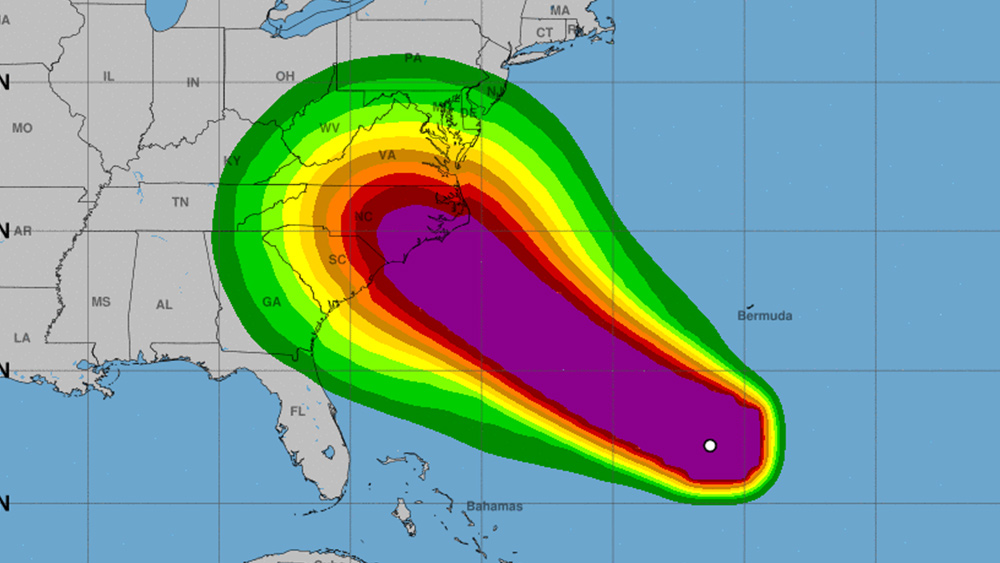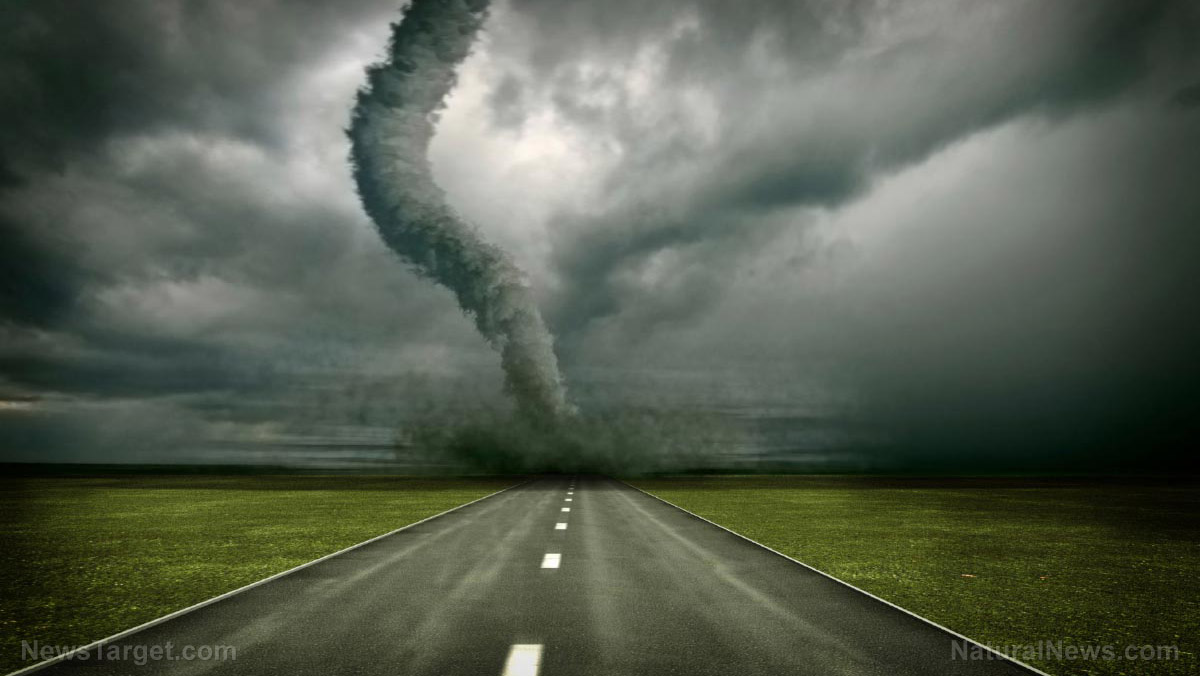Epic rainfall from Hurricane Florence could burst dams in Virginia, warn state officials
09/12/2018 / By JD Heyes

The closer Hurricane Florence gets to shore, the more dire the predictions are regarding the Category 4 storm’s potential to cause major, long-term damage to infrastructure in its path.
As of Wednesday afternoon, Florence was still several hundred miles off the coast of North and South Carolina, with forecasters saying she could make landfall in 24-36 hours. That’s not much time for officials who are scrambling to inspect the integrity of dams and other installations that could be overwhelmed by an expected rainfall of 20-45 inches, depending on who you believe.
The Wall Street Journal reported:
Authorities in the U.S. Southeast are checking dams and urging their owners to lower water levels ahead of Hurricane Florence, which is expected to unleash torrential rains and test the thousands of dams in the region.
Florence is expected to dump up to 30 inches of rain and 40 inches in some areas, according to the National Hurricane Center. The Category 4 storm was aimed at the North Carolina coastline but is big enough to threaten a broader region. It is expected to meander over the coast, amplifying the precipitation threat.
There is a dam-safety conference this week in Seattle, the paper noted, but authorities from the Carolinas skipped it so they could conduct inspections on their own dams ahead of the storm. In neighboring Virginia, officials with the state’s Department of Conservation and Recreation have identified some 100 dams they are concerned could be at risk, either because of “spotty inspection records” or because they are still being built.
“If we get 20 inches of rain in a relatively short period of time,” Russ Baxter, the department’s deputy director told the WSJ, “there could be a number of dams that will fail.”
His department is responsible for more than 3,000 dams.
Not everyone is evacuating
Meanwhile, throughout the Carolinas, Virginia, and the surrounding regions, there are more than 8,000 dams, many of which pose a substantial risk to human life were they to fail, the WSJ reported. Besides dams managed by state agencies, the Army Corps of Engineers is also responsible for a number of dams in the storm’s projected path. There are three in North Carolina, two in Virginia, and one in Maryland, a spokesman told the paper.
“The U.S. Army Corps of Engineers has fully engaged teams actively monitoring and managing these dams to make as much water storage available as possible,” the spokesman said.
Some states are urging visual inspections of dams ahead of Florence’s anticipated landfall. They have also been instructed to dust off emergency plans in case dams fail. (Related: As Hurricane Florence approaches the East Coast, these should be the top preparation priorities for residents.)
Though POTUS Trump has said the federal government is “fully prepared” to deal with the aftermath of Florence, there really is no way of knowing how severe the damage will be. Structures that people believed would hold could fail, while others viewed as weak may hold. It’s just a crap shoot at this point, but it’s projected to be bad.
Plus, there are bound to be transportation and logistics delays following a storm of this size. Power lines and communications towers could be severely impacted. Debris will have to be cleared from roads and highways. Ports and harbors could be knocked out for days.
Some states will no doubt rely on National Guard troops to assist in dealing with post-storm conditions, but not all troops who are called up may be able to respond (unless they’re pre-deployed, that’s a distinct possibility). Law enforcement, fire, and emergency medical personnel could be stretched to the limit.
And if dams start to break? There’s no telling how high the death toll will rise and the dollar amount of damage that will be done.
Loss of life has been mitigated somewhat by statewide orders to evacuate areas believed to be in Florence’s path. But many people remain, and that’s what has so many officials concerned.
Read more about what kind of disaster Florence may become at Disaster.news.
Sources include:
Tagged Under: Army Corps of Engineers, burst, chaos, dams, death, disaster, emergency, Evacuate, flood plain, Flooding, floods, heavy rain, high winds, Hurricane Florence, infrastructure, natural disaster, prepping, survival



















